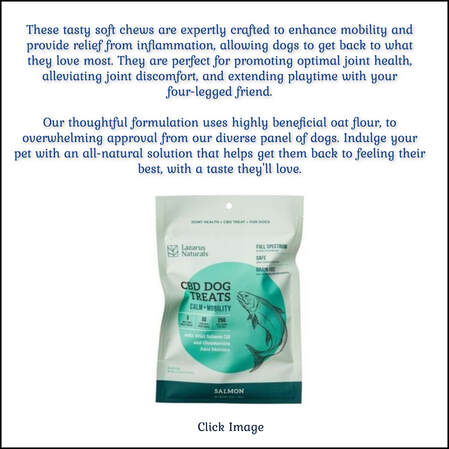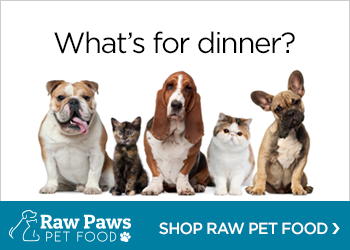Cannabis has been used safely and effectively as an all-natural remedy for thousands of years. Nowadays it has been proven to have a number of health benefits including reducing inflammation, stress and anxiety in humans. In animals, cannabidiol has been linked with prolonged lifespan, reduced anxiety and an overall improvement in the life of your pet. It’s also believed to help with a number of aggression disorders, noise phobias, canine dementia, the urge to spray and mark (for felines) and a number of other problems that often plague our pets.

By: Karen-The Ottawa Valley Dog Whisperer
MANY PEOPLE FIND THAT THEIR DOGS ARE ADVERSELY AFFECTED BY THUNDER AND THUNDERSTORMS. I am often asked why this happens and what can be done to help the dog.
My first dog 'Shanny' was affected by the noise - I was fortunate as I was with her when she first reacted as a puppy and I had the instantaneous opportunity to effect the outcome, changing her fear to joy...as you will see further below.
Two members of my dog pack (my pack consists of ten dogs, mostly rescues) arrived with previously acquired thunder/storm anxiety. While a third member of my pack arrived with previously acquired thunder/storm excitement - he would get intensely excited (barking, dashing about - not fearful but intensely excited!) by thunder and the associated storm activity. The other seven pack members are not affected by these storms at all. All three of the ‘affected’ dogs are much better these days when storms occur.
It is important to remember that (just as in people) behavior is transferable from one dog to another - we all learn from the examples around us to one degree or another. If I had 'supported and enabled the unbalanced behavior of the three pack members who behaved in an unbalanced reactive manor - the behavior of the remaining seven dogs would have become unstable as well. Behavior is also transferable from human to dog.
MANY PEOPLE FIND THAT THEIR DOGS ARE ADVERSELY AFFECTED BY THUNDER AND THUNDERSTORMS. I am often asked why this happens and what can be done to help the dog.
My first dog 'Shanny' was affected by the noise - I was fortunate as I was with her when she first reacted as a puppy and I had the instantaneous opportunity to effect the outcome, changing her fear to joy...as you will see further below.
Two members of my dog pack (my pack consists of ten dogs, mostly rescues) arrived with previously acquired thunder/storm anxiety. While a third member of my pack arrived with previously acquired thunder/storm excitement - he would get intensely excited (barking, dashing about - not fearful but intensely excited!) by thunder and the associated storm activity. The other seven pack members are not affected by these storms at all. All three of the ‘affected’ dogs are much better these days when storms occur.
It is important to remember that (just as in people) behavior is transferable from one dog to another - we all learn from the examples around us to one degree or another. If I had 'supported and enabled the unbalanced behavior of the three pack members who behaved in an unbalanced reactive manor - the behavior of the remaining seven dogs would have become unstable as well. Behavior is also transferable from human to dog.
FIRST SOME BACKGROUND INFORMATION
DOGS ARE MORE SENSITIVE THAN MOST PEOPLE REALIZE…
A dog's sense of hearing and smell is much more acute then ours. For most people our primary form of communication is voice, but dogs rely on body language to consciously communicate much more than humans do.
When we think of something that makes us happy, unhappy, sad, angry, excited, etc. the thought translates to our body. We may tense our shoulders, clench our hand, narrow our eye, purse our mouth, change our breathing and so on. This is our physical reaction to our own thoughts. This in itself is a form of communication and your dog has taken notice…our dogs are often aware of what we feel before we are.
Because I work with dogs who are in various states and intensities within the scales of behavior, I have had to train myself to be very aware of how I feel. I have to be capable of disengaging emotion and refocusing instantly or I can have a negative influence on the dog. Understanding this is key to understanding how we can affect our dog's perceptions & associations of events, things, places, people, etc. This is the psychological factor.
DOGS ARE MORE SENSITIVE THAN MOST PEOPLE REALIZE…
A dog's sense of hearing and smell is much more acute then ours. For most people our primary form of communication is voice, but dogs rely on body language to consciously communicate much more than humans do.
When we think of something that makes us happy, unhappy, sad, angry, excited, etc. the thought translates to our body. We may tense our shoulders, clench our hand, narrow our eye, purse our mouth, change our breathing and so on. This is our physical reaction to our own thoughts. This in itself is a form of communication and your dog has taken notice…our dogs are often aware of what we feel before we are.
Because I work with dogs who are in various states and intensities within the scales of behavior, I have had to train myself to be very aware of how I feel. I have to be capable of disengaging emotion and refocusing instantly or I can have a negative influence on the dog. Understanding this is key to understanding how we can affect our dog's perceptions & associations of events, things, places, people, etc. This is the psychological factor.
Many non-human animals have a greater and more immediate sensitivity to changes in the environment than we do. For example, some dogs can sense the onset of an earthquake minutes or more before we feel any sign ourselves. A dog's sensitivity to environmental changes (is ambient air pressure changes, noise, visual, electrical energy, vibrations in the air and ground, etc.) vary from one individual dog to another. And just as some people get migraines from changes in air pressure, some dogs can find environmental changes at best unsettling, at worst painful. This is the physical factor.
So, If a dog's state of being is adversely affected by thunder...
The root of the dogs discomfort may be psychological, it may be physical or a combination of both. Most of the dogs I encounter that have a fear of thunder have a psychological trigger rather than a physical trigger.
So, If a dog's state of being is adversely affected by thunder...
The root of the dogs discomfort may be psychological, it may be physical or a combination of both. Most of the dogs I encounter that have a fear of thunder have a psychological trigger rather than a physical trigger.
Most often, a dog’s dislike of thunder starts with an initial incident. If during this initial incident the dog is not helped to understand that it is safe from harm, that thunder is normal and not a threat - the dog then experiences the thunder in an unrelieved state of stress. The storm ends and the dog - not having had the opportunity to experience the storm in another state (i.e. calm, non-threatening with a sense of safety) then moves into the future associating thunder with uncertainty, insecurity and fear. If left unaddressed, the dog’s anxiety gets worse over time. If the dog’s human feel distress at the dog’s anxious state the dog’s anxiety gets worse.
A self-feeding cycle of tension & anxiety is then fully established.
You can see if any of these examples reflect your dog’s situation…
A dog has a predisposition to being insecure when left alone. The dog is alone, hears thunder for the first time, becomes startled. The dog’s human companion is not present to coach/mentor the dog through the experience.
A dog hears thunder for the first time, the dog seems startled. The dog’s human instantly reacts with extreme concern for their dog. The human’s reaction confirms to the dog that its initial response to thunder was justified, because it’s human is upset.
An adopted dog has no prior dislike of thunderstorms. However their new human companion is nervous/uncomfortable/startled by storms (wind, heavy rain, thunder etc.) - this discomfort can be transferred to the dog...remember dogs look to their humans for leadership.
A self-feeding cycle of tension & anxiety is then fully established.
You can see if any of these examples reflect your dog’s situation…
A dog has a predisposition to being insecure when left alone. The dog is alone, hears thunder for the first time, becomes startled. The dog’s human companion is not present to coach/mentor the dog through the experience.
A dog hears thunder for the first time, the dog seems startled. The dog’s human instantly reacts with extreme concern for their dog. The human’s reaction confirms to the dog that its initial response to thunder was justified, because it’s human is upset.
An adopted dog has no prior dislike of thunderstorms. However their new human companion is nervous/uncomfortable/startled by storms (wind, heavy rain, thunder etc.) - this discomfort can be transferred to the dog...remember dogs look to their humans for leadership.
The dog & its human companion are out walking in the rain when it starts to thunder, the human gets annoyed/anxious or concerned about getting wet - just then the thunder booms - the dog now associations thunder with a nervous state.
There are many variations on this theme but you can get a sense of how this state of anxiety starts and is then reinforced.
WHAT YOU SHOULD NOT DO
Do not reinforce your dog's anxious/agitated state. If you feel badly, sorry or distressed for your dog you inadvertently reinforce their commitment to the anxiety. Don't indulge yourself, don’t be reactive- it seems a harsh, cold thing to say at first but displaying and feeling, any emotion is not what your dog wants.
Patting your dog is not going to help either - it will have the reverse effect. I know that many of you will read this and not like what you hear at first, but read on and then decide. To pat a dog when they are in an unbalanced state is received by the dog as a reward for being in that state. If a child (or adult) is behaving in an unbalanced manor and you offer a reward the message is that they will be rewarded for being in that state. In addition, if you pat your dog while you are anxious you have doubled the trouble. Below I will talk about touch in a different way.
Remember what I noted above - dogs read your body language, and take note of the energy behind your voice instantaneously - they can tell how you feel. As their pack leader they look to you for leadership - if they feel you are upset it tells them that they should also be upset. If you are nervous/fearful of thunderstorms, high winds etc. you can create the same fear/discomfort in your dog. Lead consciously by example.
There are many variations on this theme but you can get a sense of how this state of anxiety starts and is then reinforced.
WHAT YOU SHOULD NOT DO
Do not reinforce your dog's anxious/agitated state. If you feel badly, sorry or distressed for your dog you inadvertently reinforce their commitment to the anxiety. Don't indulge yourself, don’t be reactive- it seems a harsh, cold thing to say at first but displaying and feeling, any emotion is not what your dog wants.
Patting your dog is not going to help either - it will have the reverse effect. I know that many of you will read this and not like what you hear at first, but read on and then decide. To pat a dog when they are in an unbalanced state is received by the dog as a reward for being in that state. If a child (or adult) is behaving in an unbalanced manor and you offer a reward the message is that they will be rewarded for being in that state. In addition, if you pat your dog while you are anxious you have doubled the trouble. Below I will talk about touch in a different way.
Remember what I noted above - dogs read your body language, and take note of the energy behind your voice instantaneously - they can tell how you feel. As their pack leader they look to you for leadership - if they feel you are upset it tells them that they should also be upset. If you are nervous/fearful of thunderstorms, high winds etc. you can create the same fear/discomfort in your dog. Lead consciously by example.
WHAT YOU SHOULD DO
If you are present the first time your dog reacts...
You have the opportunity to address and determine a normal outcome from the get go. Pay attention if your dog starts to react to a storm or thunder be deliberately calm and confident. Provide direction not affection. Your dog really wants to feel secure in knowing that you are confident that all is safe and well. Treat the environmental change as normal in your mind and be aware and control your physical reactions. This will have a big impact on your dog - by being calm & confident you provide the example. Then provide direction - let your dog know what you want it to do - i.e. sit and lie down. If your dog gets up - correct by following through immediately, provide calm, confident, assertive direction again - i.e. sit and lie down. Have patience, do not get frustrated. Keep the pitch of your voice low key, and without excess emotion. Attention, direction, correction, follow through.
If the fear behavior is a long standing issue…
You want to help your dog attain a balanced, comfortable state of being by so doing you ease your dogs psychological pain and trauma. The best case scenario is that you completely change your dog’s association of thunder from negative to positive. This is curing the issue. If you are not able to cure the issue on your own you can still positively intervene. As you read through ONE, TWO, THREE and FOUR below you will see what I mean.
I recommend that ONE always be used and that TWO, THREE and FOUR be used as support if required and then removed when no longer required. This is a ‘cure’.
If you only use TWO, THREE or FOUR without ONE you are unlikely to affect a permanent cure. You will always have to address this issue. This is a ‘band aid’.
Both are good approaches but the first is best.
ONE - Employ psychological intervention by using your own state of being - lead by example - by being calm & confident, all as noted in the paragraph above. You can try to use this method alone but if you are not well versed in Pack Leadership, I recommend using ‘ONE’ with a combination of ‘TWO’, and/or ‘THREE’ or ‘FOUR’. ‘FOUR’ is an excellent approach and when used with ‘ONE’ is very effective!
If you are present the first time your dog reacts...
You have the opportunity to address and determine a normal outcome from the get go. Pay attention if your dog starts to react to a storm or thunder be deliberately calm and confident. Provide direction not affection. Your dog really wants to feel secure in knowing that you are confident that all is safe and well. Treat the environmental change as normal in your mind and be aware and control your physical reactions. This will have a big impact on your dog - by being calm & confident you provide the example. Then provide direction - let your dog know what you want it to do - i.e. sit and lie down. If your dog gets up - correct by following through immediately, provide calm, confident, assertive direction again - i.e. sit and lie down. Have patience, do not get frustrated. Keep the pitch of your voice low key, and without excess emotion. Attention, direction, correction, follow through.
If the fear behavior is a long standing issue…
You want to help your dog attain a balanced, comfortable state of being by so doing you ease your dogs psychological pain and trauma. The best case scenario is that you completely change your dog’s association of thunder from negative to positive. This is curing the issue. If you are not able to cure the issue on your own you can still positively intervene. As you read through ONE, TWO, THREE and FOUR below you will see what I mean.
I recommend that ONE always be used and that TWO, THREE and FOUR be used as support if required and then removed when no longer required. This is a ‘cure’.
If you only use TWO, THREE or FOUR without ONE you are unlikely to affect a permanent cure. You will always have to address this issue. This is a ‘band aid’.
Both are good approaches but the first is best.
ONE - Employ psychological intervention by using your own state of being - lead by example - by being calm & confident, all as noted in the paragraph above. You can try to use this method alone but if you are not well versed in Pack Leadership, I recommend using ‘ONE’ with a combination of ‘TWO’, and/or ‘THREE’ or ‘FOUR’. ‘FOUR’ is an excellent approach and when used with ‘ONE’ is very effective!
TWO - If your dog normally paces or runs about in an anxious way - stop your dog right away! One of the worst things to do is to allow a dog to run around, pace, etc. in an anxious state. At this point the dog is driven by fear and does not know where to go or what to do to feel safe. It is really important (once again) that the dog’s human takes the leadership role and shows the dog what it should do. Incessant pacing/running about, indicates that your dog is not only distressed but does not know what to do...and does want to find a safe place to be. If your dog is crate trained, put him/her in their crate and close the crate door. They want guidance at that time - crating tells them were to be and provides them with a safe haven. Don't talk to them, pat them or worry. Just treat this as normal. They may tremble & continue to show other signs of stress at first, but if you just leave them in peace they will start to calm & will even fall asleep. This may take multiple storms to achieve the calm & sleep state but with patience and the right energy as noted in ONE above your dog will start to normalize thunder. If your dog is not crate trained you can assign it another ‘gated’ space to lie down in like a bathroom, or bedroom. Remember your dog seeks peace and calm.
THREE - You can use supportive tools such as herbs and rescue remedies for dogs. Theses are commonly available via the internet, pet supply stores and some health food stores. Make sure you are purchasing rescue remedies consisting of all natural ingredients. Bach Flower Canada as well as Black Wing Farms make excellent rescue remedies.
Many people use the ‘Thundershirt’. The point of the Thundershirt is that it applies an even pressure all around the dog - and as such is intended to have a calming effect. I know many people who find this works very well. The Thundershirt like the rescue remedies is available via the internet and at many pet supply stores. (I have never used it on dog's myself only because I have never had to as I use methods ONE, TWO and FOUR with success). I have many clients who have tried to use the thundershirt only to find it made no difference whatsoever.
FOUR - You can also teach your dog to change their association with thunder and storms by providing them something to do during storms i.e. work, walking/running on a treadmill etc. To do this successfully 1) start with an awareness of your state - calm, deliberate confidence, with a solid commitment & persistence 2) an expectation that you must work at this over time to have it take effect. I have also used this technique with great success.
It is important to note that in the end - your goal is change your dog's association of thunder from negative to positive. If done properly, over time you will not, should not always have to support with TWO, THREE and FOUR, but you should always employ ONE.
THREE - You can use supportive tools such as herbs and rescue remedies for dogs. Theses are commonly available via the internet, pet supply stores and some health food stores. Make sure you are purchasing rescue remedies consisting of all natural ingredients. Bach Flower Canada as well as Black Wing Farms make excellent rescue remedies.
Many people use the ‘Thundershirt’. The point of the Thundershirt is that it applies an even pressure all around the dog - and as such is intended to have a calming effect. I know many people who find this works very well. The Thundershirt like the rescue remedies is available via the internet and at many pet supply stores. (I have never used it on dog's myself only because I have never had to as I use methods ONE, TWO and FOUR with success). I have many clients who have tried to use the thundershirt only to find it made no difference whatsoever.
FOUR - You can also teach your dog to change their association with thunder and storms by providing them something to do during storms i.e. work, walking/running on a treadmill etc. To do this successfully 1) start with an awareness of your state - calm, deliberate confidence, with a solid commitment & persistence 2) an expectation that you must work at this over time to have it take effect. I have also used this technique with great success.
It is important to note that in the end - your goal is change your dog's association of thunder from negative to positive. If done properly, over time you will not, should not always have to support with TWO, THREE and FOUR, but you should always employ ONE.
On the subject of touch - in some cases I do use touch, not for affection in the way people normally associate touch with, but instead as a calming measure. I do not do this with all dogs - only for special cases where I feel, instinctively that touch will aid not abet. The touch is really more akin to a deep tissue type massage - it is not a ‘pat’ and my state of being when I do this is firmly centered in calm confidence. This is a form of affection (as I define affection - any action carried out for the true good of the dog) but has a deeper and broader meaning and purpose.
The single biggest problem with affection is that people share it with their dog for the wrong reason at the wrong time and in the wrong way. Not all affection is good. Not all affection is truly, honestly shared with the dog’s well fare first in mind.
AN EXAMPLE OF A GREAT OUTCOME
The tale below (an excerpt from the Tales page of my website) is mine & Shanny's story about how she and I worked together to positively effect her first experience with thunder and thunderstorms. Shanny was my first dog and my best friend!
SHANNY & THE THUNDERSTORM
When I lived in Orleans (Ottawa, Canada), my house was about a twenty-five minute walk from my Mom's and Dad’s home. Sometimes Shanny and I would walk over to my parent’s home and then go for a walk with them and their dog ‘Button’, on the wooded ravine trails near their home.
On this one particular occasion Shanny and I were walking home from my parent’s place - we were about half-way home when all of a sudden, thunder, lightening and rain began. Shanny was under 12 months of age at the time and although she had experienced other such storms she became very alarmed at the first sound of thunder.
I just looked at her, then looked at the huge puddles forming on the pavement and said "never mind that Shanny, lets go play". I proceeded to jump in a puddle with Shanny in tow. Shanny looked at me, looked at the puddle, stopped shaking and joined me to play in the deep puddles. We continued to jump in puddles all the way home. When we reached the park that we would need to pass through to get to our home, we found even bigger puddles. I let Shanny off her leash and she dashed for the largest puddle (this puddle was like a brook, as the water was streaming into the gully between two landscaped hills. She ran through the puddles; head down, she ‘piggy snorted’ the water while dashing back and forth. It was a joy to watch her - I spent the next five minutes laughing while she played. We were both thoroughly soaked, but it was a warm rain and we had enjoyed ourselves. I called Shanny over to me and we crossed the street and went home.
Shanny was never again fearful of thunderstorms - in fact she would ask me to take her out to the park across the street to play in puddles during the storms. If I judged the conditions to be safe we would go out to play in the water.
The single biggest problem with affection is that people share it with their dog for the wrong reason at the wrong time and in the wrong way. Not all affection is good. Not all affection is truly, honestly shared with the dog’s well fare first in mind.
AN EXAMPLE OF A GREAT OUTCOME
The tale below (an excerpt from the Tales page of my website) is mine & Shanny's story about how she and I worked together to positively effect her first experience with thunder and thunderstorms. Shanny was my first dog and my best friend!
SHANNY & THE THUNDERSTORM
When I lived in Orleans (Ottawa, Canada), my house was about a twenty-five minute walk from my Mom's and Dad’s home. Sometimes Shanny and I would walk over to my parent’s home and then go for a walk with them and their dog ‘Button’, on the wooded ravine trails near their home.
On this one particular occasion Shanny and I were walking home from my parent’s place - we were about half-way home when all of a sudden, thunder, lightening and rain began. Shanny was under 12 months of age at the time and although she had experienced other such storms she became very alarmed at the first sound of thunder.
I just looked at her, then looked at the huge puddles forming on the pavement and said "never mind that Shanny, lets go play". I proceeded to jump in a puddle with Shanny in tow. Shanny looked at me, looked at the puddle, stopped shaking and joined me to play in the deep puddles. We continued to jump in puddles all the way home. When we reached the park that we would need to pass through to get to our home, we found even bigger puddles. I let Shanny off her leash and she dashed for the largest puddle (this puddle was like a brook, as the water was streaming into the gully between two landscaped hills. She ran through the puddles; head down, she ‘piggy snorted’ the water while dashing back and forth. It was a joy to watch her - I spent the next five minutes laughing while she played. We were both thoroughly soaked, but it was a warm rain and we had enjoyed ourselves. I called Shanny over to me and we crossed the street and went home.
Shanny was never again fearful of thunderstorms - in fact she would ask me to take her out to the park across the street to play in puddles during the storms. If I judged the conditions to be safe we would go out to play in the water.
I BRING GOOD NEWS - YOU CAN MITIGATE AND EVEN CURE YOUR DOG’S THUNDER ANXIETY - DON’T GIVE UP HOPE!
Your kit-of-tools to success is complete, you don’t need to go out and purchase anything - you already have what you need…you just have to dust off and polish up your tools a little. Your tools are - your patience, persistence, determination - your will; and a safe, comfy, not too large space for your dog to stay. We will get into the details below.
And please be further reassured - the age of your dog does not matter, puppy, teenager, adult or senior dog - all is possible.
Of my ten dog pack - primarily rescues - two of the females were severely affected by thunder and gun shots - Abby my German Shepherd x Belgian Shepherd and Tasha my Australian Shepherd. Tasha also had separation anxiety.
If the air pressure change signaled the onset of a T-storm Abby would start to quiver, then shake, pant and then tremble so acutely - her heartbeat was as if she would have a heart attack. I adopted Abby at 18 months of age - she arrived with this anxiety. Tasha would also have these physiological symptoms. They would dash about looking for a safe haven - jumping into the bathtub, wrapping around the base of a toilet, moving from one place to another in search of safety - in total panic, meltdown, shut down. With patience and the right type of care they are both much better today.
The key to stop the meltdown and shut down is to provide leadership - eventually you will see improvement. If you have not already read these two articles on this page you will need to in order to have a full understanding of your role as guardian through the storm!
Your kit-of-tools to success is complete, you don’t need to go out and purchase anything - you already have what you need…you just have to dust off and polish up your tools a little. Your tools are - your patience, persistence, determination - your will; and a safe, comfy, not too large space for your dog to stay. We will get into the details below.
And please be further reassured - the age of your dog does not matter, puppy, teenager, adult or senior dog - all is possible.
Of my ten dog pack - primarily rescues - two of the females were severely affected by thunder and gun shots - Abby my German Shepherd x Belgian Shepherd and Tasha my Australian Shepherd. Tasha also had separation anxiety.
If the air pressure change signaled the onset of a T-storm Abby would start to quiver, then shake, pant and then tremble so acutely - her heartbeat was as if she would have a heart attack. I adopted Abby at 18 months of age - she arrived with this anxiety. Tasha would also have these physiological symptoms. They would dash about looking for a safe haven - jumping into the bathtub, wrapping around the base of a toilet, moving from one place to another in search of safety - in total panic, meltdown, shut down. With patience and the right type of care they are both much better today.
The key to stop the meltdown and shut down is to provide leadership - eventually you will see improvement. If you have not already read these two articles on this page you will need to in order to have a full understanding of your role as guardian through the storm!
FIRST PLEASE DO NOT ANTICIPATE - PLEASE STRATEGICALLY LEAD
If, at the first sign of rain, storm, thunder - you feel any negative thought/emotion anticipation, even release a sigh - it will reinforce your dog’s reaction to the incoming storm! To help break the pattern - the association ever little bit counts. Really the first place to start is to switch your own association - switch your entire psyche to focus on work. Being your dog’s guardian, leading - it is work. When we remain in personal mode we are emotive, and this makes us ineffective as we forget to disengage from emotion. Our expectations and communication becomes clouded rather than clear. We get too close, too involved in emotion and argument. When we switch our brain to working mode our expectations are different than when we are not working. When we think work - we employ logic, we direct, we are confident and calm.
Dogs want direction not sympathy. If you see your dog start to react…ears go down, tail goes down, a shiver, a whine switch modes immediately! Don’t feel sorry; instead switch to work and action from a calm and determined perspective.
Timing as in many situations is everything. The sooner you strategically intervene the better.
Most dogs that are afraid of thunder (gun shots, fire works) go into flight mode, they run about looking desperately for somewhere safe to go. Freedom to run about only makes them more desperate.
If, at the first sign of rain, storm, thunder - you feel any negative thought/emotion anticipation, even release a sigh - it will reinforce your dog’s reaction to the incoming storm! To help break the pattern - the association ever little bit counts. Really the first place to start is to switch your own association - switch your entire psyche to focus on work. Being your dog’s guardian, leading - it is work. When we remain in personal mode we are emotive, and this makes us ineffective as we forget to disengage from emotion. Our expectations and communication becomes clouded rather than clear. We get too close, too involved in emotion and argument. When we switch our brain to working mode our expectations are different than when we are not working. When we think work - we employ logic, we direct, we are confident and calm.
Dogs want direction not sympathy. If you see your dog start to react…ears go down, tail goes down, a shiver, a whine switch modes immediately! Don’t feel sorry; instead switch to work and action from a calm and determined perspective.
Timing as in many situations is everything. The sooner you strategically intervene the better.
Most dogs that are afraid of thunder (gun shots, fire works) go into flight mode, they run about looking desperately for somewhere safe to go. Freedom to run about only makes them more desperate.
If your dog is crate trained, calmly, confidently bring your dog to its crate, guide your dog in and close the crate door. Your dog may try to evade going into the crate - don’t feel bad - just be calm, no panic, have no second thoughts - guide your dog in. Your dog is simply struggling as they are in panic mode and are accustomed to fleeing, remember if you have an ingrained habit it is normal for you to seek fulfillment of that habit. If they have a favorite toy, you can put it in the crate too.
If your dog is not crate trained then have another small space in which you can confine your dog - the space should be large enough to fit a comfy dog bed - no bigger no smaller.
If the space, crate that you confine your dog in can be located in a quiet corner within a space near where you will be, coming and going that is fine. I tend to use a crate in the kitchen or living room for this purpose. Don’t hide the dog away in some remote space - you want them to learn not to cower and hide. While you work to get them accustomed to normalizing storms they need to feel secure not sequestered.
If your dog is not crate trained then have another small space in which you can confine your dog - the space should be large enough to fit a comfy dog bed - no bigger no smaller.
If the space, crate that you confine your dog in can be located in a quiet corner within a space near where you will be, coming and going that is fine. I tend to use a crate in the kitchen or living room for this purpose. Don’t hide the dog away in some remote space - you want them to learn not to cower and hide. While you work to get them accustomed to normalizing storms they need to feel secure not sequestered.
Once your dog is in the space or crate, walk away. Don’t say anything, don’t look, don’t touch, don’t feel anything but calm. As you go through this entire process you need to think ‘thunderstorms are normal, and you, my dear dog need to get accustomed to such storms and that is it. And then you should go about your business in a normal, relaxed fashion - forget how your dog feels and what your dog is doing. By normalizing this in your mind, by relaxing and not treating the storm as anything more you will help your dog to normalize.
Right now you may think you need to stay by your dog’s side, that you need to touch them, say affectionate things to them…but if you do these things you are telling your dog that the situation is not normal. You are reinforcing their anxiety. Just think about it. Instead if you settle them into a comfortable spot, get up and go about your business - you are saying this is normal, be normal. This is what your dog really needs. To feel from you that all is well, normal and safe.
You may be thinking - but my dogs comes to get me and expects me to be there holding her and talking to her. She only does this because it is the pattern you have set in motion - you have not shown her what else she can do - relax - you have not shown her where - in a safe, comfortable contained space. She has no other option. Give her an alternative, be patient and allow her to adjust. Give her proper direction - calm, confident logical - no playing into emotions hers or yours.
You may not see any changes the first time but be patient, just wait. This is a psychologically driven situation - patience and confidence is key. The first time you may see little change - don’t worry. Persist. Soon you will see your dog learn to calm and sleep in comfort. Eventually they will not require such confinement.
Remember your most effective tool is your own state-of-being - employ calm, confidence and logic. Lead by the right example. Don’t engage in fuss, emotion and worry - you will make your dog worried and stressed. This is all about changing your dog’s association with thunder storms and your bad habits of supporting and enabling psychological trauma with emotion.
You may be thinking - but my dogs comes to get me and expects me to be there holding her and talking to her. She only does this because it is the pattern you have set in motion - you have not shown her what else she can do - relax - you have not shown her where - in a safe, comfortable contained space. She has no other option. Give her an alternative, be patient and allow her to adjust. Give her proper direction - calm, confident logical - no playing into emotions hers or yours.
You may not see any changes the first time but be patient, just wait. This is a psychologically driven situation - patience and confidence is key. The first time you may see little change - don’t worry. Persist. Soon you will see your dog learn to calm and sleep in comfort. Eventually they will not require such confinement.
Remember your most effective tool is your own state-of-being - employ calm, confidence and logic. Lead by the right example. Don’t engage in fuss, emotion and worry - you will make your dog worried and stressed. This is all about changing your dog’s association with thunder storms and your bad habits of supporting and enabling psychological trauma with emotion.





















